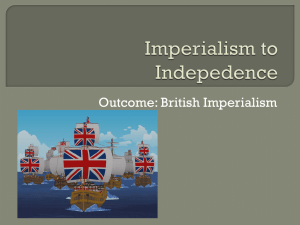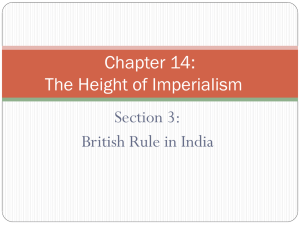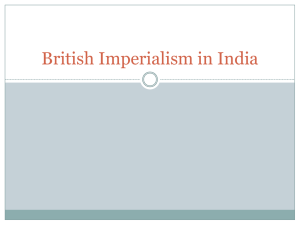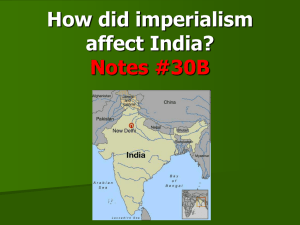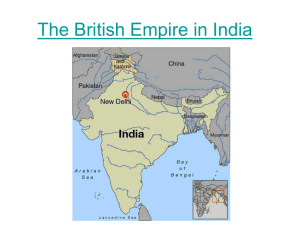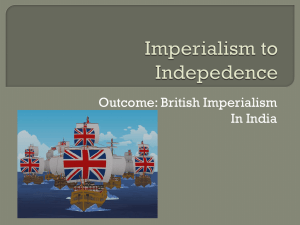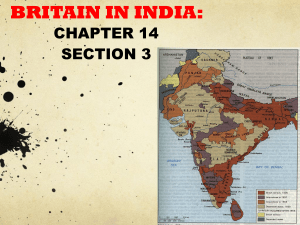25.4-history - WorldHistoryClinton
advertisement
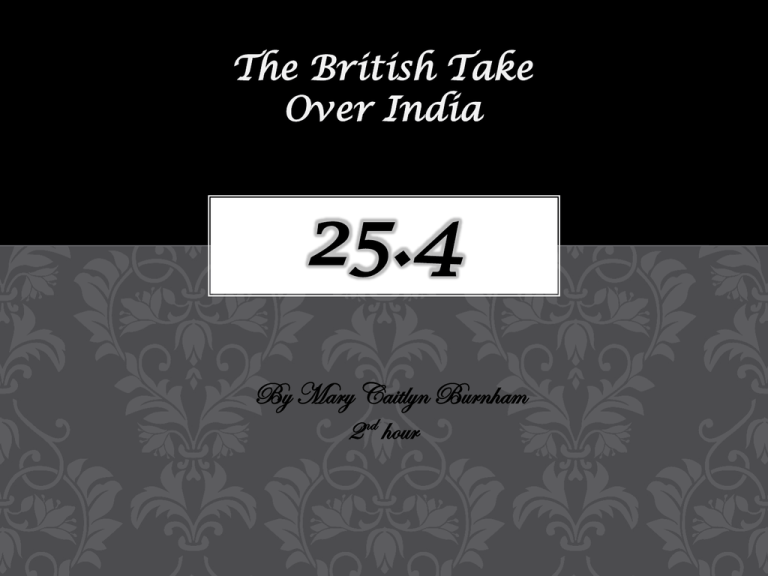
The British Take Over India 25.4 25.4 By Mary Caitlyn Burnham 2nd hour THE EAST INDIA COMPANY *In the mid-1800s, the East India Company controlled three fifths of India. *The main goal of the East India Company was to make money, and often leading officials got very rich. *The company also worked to improve roads, preserve peace, and reduce violence. *British missionaries tried to convert Indians to Christianity, which they felt was far superior to Indian religions. *The British also pushed for social change. They worked to end slavery and the caste system (in traditional Indian society, unchangeable social group into which a person is born) and improve the position of women within the family. THE SEPOY REBELLION *Indians from all social classes resented British interference and domination. Well educated Indians were shut out of high posts. *In line with mercantilist policy, the British kept Indians from engaging in large-scale manufacturing. Peasants felt the impact of the British-imposed economic policies and were angry at laws that violated ancient customs and traditions. *In the 1850s, the East India Company required sepoys (Indian troops) to serve anywhere, either in India or over seas. Over seas travel was an offense to their religion. *The second cause of discontent was a new law that allowed Hindu widows to remarry. Hindus viewed both moves as a Christian conspiracy to undermine their beliefs. *The third insult was in 1857. The British issued new rifles to the sepoys. They were told to bite off the tips of the cartridges before loading them into the rifles. The cartridges, however, were greased with animal fat, which the Hindus considered sacred. CONTINUED. . . *The Sepoy Rebellion swept across northern and central India. Sepoy regiments marched off to Delhi. There, they hailed the last Mughal ruler as their leader.. The sepoys brutally massacred British men, women, and children. The British soon rallied and crushed the revolt, murdering innocent Indians. *In 1858, Parliament ended the rule of East India Company and put India directly under the British crown. They sent more troops to India, taxing Indians to pay the cost of the occupying forces. THE “BRIGHTEST JEWEL” *British policies were designed to fit India into the overall British economy. They felt they were helping India modernize. *The British flooded India with inexpensive, machine-made textiles, ruining India’s once prosperous hand-weaving industry. *New farming methods increased food production. The result was rapid population growth. The rising numbers, however, put a strain on the food supply, especially as farmland was turned over to growing cash crops instead of food. *In the late 1800s, terrible famines swept India. Millions of Indian peasants sank deeply into poverty. INDIANS AND BRITISH: VIEWING TWO CULTURES *Ram Mohan Roy was a great scholar, he knew Sanskrit, Persian, and Arabic classics, as well as English, Greek, and Latin works. GROWING NATIONALISM
